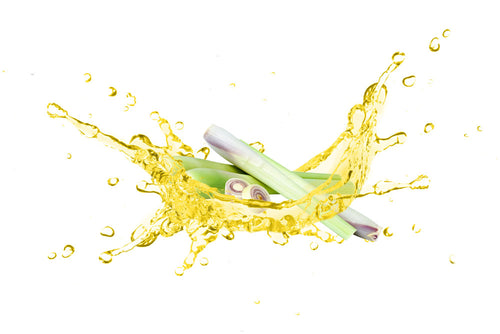Pets? Dust? Bacteria? Sickness? You name it. Air purifiers can tackle a number of issues from pesky allergens to serious illnesses.
Determining the best air purifier for your needs is vital for improving your health and well-being.
We created this guide to help you understand what matters, the questions to ask, and the key differences between different types of air purifiers on the market.
How Do You Know You Need an Air Purifier?
According to the EPA, indoor air pollution is one of the top five risks to public health.
First, consider: what do air purifiers do? They address common complaints and risks that arise from airborne contaminants.
Anyone can benefit from adding an air purifier to their home, but there are key symptoms that signal an urgent need for one.
Specific symptoms point to the need for an air purifier. Consider purchasing an air purifier if you are experiencing any of the following symptoms:
- Allergy symptoms. This can include itchy eyes, a stuffy nose, headaches, and other related symptoms.
- Asthma flare-ups. If you have known asthma, encountering regular allergens like dust or pet hair can be highly symptomatic, and even deadly.
- Bad odors. Bad odors can be a sign of a lot of things (i.e. water leak, spoiled food, etc.), but odors are also a sign an air purifier could help your situation.
- Visible dust on furniture. This is a telltale sign you have dust particles in the air if you can see it on your furniture.
- Smoke. If you live in an area with smoke in the air outside, it is likely traveling inside.
- Mold. Air purifiers can help trap and neutralize mold spores and toxins.
- Stale or stuffy air. This can be a sign you have poor airflow or air quality in your home. An air purifier will help move air around and flush poor quality air out.
- Presence of smelly chemicals, disinfectants, etc. Known as VOC’s, volatile organic compounds are emitted as gasses from certain solids or liquids. Air purifiers can help filter VOCs out of your indoor air.
- You or a family member are sick. Increasing your indoor air quality aids in healing. Air purifiers can help get rid of airborne viruses and bacteria, and aid in healing from respiratory illness.
In purchasing an air purifier, you should consider what reactions and symptoms you’re seeing in your family, and buy an effective air purifier that mitigates these problems.
Fast Facts About Possible Reactions to Airborne Contaminants
If you personally experience allergies and other respiratory or physical reactions, then you know what an impactful and negative effect they can have on your life. You may be living with what feels like a chronic cold. It’s not surprising that allergies are one of the top reasons consumers begin searching for an air purifier.
Common symptoms of contaminants, especially allergens, in the air include runny noses, coughs, headaches, eye and nose irritation, and chronic infections or respiratory problems. While medication can address the symptoms, air purifiers can address the root cause: they filter the air in your home to remove the particles that are the cause of your allergies.
In general, irritation from allergens and other contaminants are worsened by one of three main factors: immune response, genetic predisposition, and environmental factors. Many individuals experience seasonal allergies as well.
In rare cases, airborne allergens can trigger severe allergic reactions which can cause airway constriction. Called anaphylaxis, this typically only occurs in people with extreme food, insect, or latex allergies.
Certain airborne allergens can cause other severe symptoms, especially with prolonged exposure. According to research, repeated exposure to similar allergens can cause hypersensitivity pneumonitis, an allergic reaction that causes lung inflammation. Symptoms can include fever, fatigue, chills, shortness of breath, and weight loss.
Allergy sufferers can also experience allergic asthma, a condition in which common allergens like dust, pollen and mold cause the airways to constrict. Allergic asthma can cause shortness of breath, coughing, wheezing, stuffy nose, itchy eyes, and a rash.
It’s not uncommon for asthma and allergies to coexist since they are both triggered by an overactive immune response. In both cases, an air purifier for allergies can aid in prevention and recovery.
Air Quality
Why does air quality matter? At Air Oasis, we help people breathe clean air. Air purification may be the only way to reduce airborne contaminants and allergens.
The government created the Indoor Air Quality (IAQ) measurement to measure the air quality within and around buildings, homes, and structures. IAQ helps us understand common indoor pollutants to reduce the risk of health concerns.
Health effects from indoor air pollutants can be both immediate and long-term. Websites like AirNow.gov allow you to search the air quality in your zip code to stay informed of your location-based risks, and other resources help you measure the IAQ of your indoor space.
Evaluate Your Budget for an Air Purifier
Know your budget for purchasing an air purifier before you begin the research process. As with most technology, there is a range of what you can spend, and a number of companies that manufacture air purifiers. With your budget in hand, you can focus on getting the most specific features for your needs, all within a price that fits your budget.
This table indicates the manufacturing company, the type of air purification technology used, and the price range (least expensive to most expensive) to allow you to compare costs versus features.
|
Air Purifier Model |
Price Range |
UV Air Purifier |
HEPA |
Carbon Filter |
Ionization |
|
Honeywell TruHEPA or InSight |
$159-$289 |
✔ |
✔ |
||
|
Levoit Core 400S |
$219 |
✔ |
|||
|
Coway AP-1512HH Mighty |
$229 |
✔ |
✔ |
||
|
Blueair Blue Pure 211-311 Auto |
$239-$339 |
✔ |
|||
|
$299-$799 |
✔ |
✔ |
✔ |
✔ |
|
|
Dyson Pure Cool |
$419-$689 |
✔ |
|||
|
Blueair Classic 605 |
$430 |
✔ |
✔ |
||
|
Molekule Air Pro |
$959-$1199 |
✔ |
✔ (PECO) |
How Much Does an Air Purifier Cost?
As you can see from the chart, saving cost can mean sacrificing features. On the flip side, just because you buy the most expensive air purifier does not necessarily mean you will be purchasing the best fit for your needs.
If you have clearly defined your budget for an air purifier, you can identify which air purifiers have the features you need. From here, select an air purifier with the most relevant feature offerings within the price range you’ve defined for yourself.
An air purifier is an investment. Specific features and capabilities can impact price. When possible, stay focused on purchasing an air purifier with the features that solve your specific health issues or symptoms.
With Air Oasis, you can shop by concern or model to find the best portable air purifier for your space and budget.
Measure Your Space
Air purifiers are created with a certain capacity for handling air flow. In addition to cost and features, you’ll need to determine the square footage needs of your space.
Every air purifier on the market has a slightly different effective square footage range. Make sure the effective range is a match for the size of your space.
|
Air Purifier Model |
Effective Range |
|
Honeywell TruHEPA or InSight |
500 ft² |
|
Levoit Core 400S |
403 ft² |
|
Coway AP-1512HH Mighty |
361 ft² |
|
Blueair Blue Pure 311 Auto |
388 ft² |
|
iAdaptAir® HEPA UV Air Purifier (Large size) |
850 ft² |
|
Dyson Pure Cool |
400 ft² |
|
Blueair Classic 605 |
775 ft² |
|
Molekule Air Pro |
1,000 ft² |
Find the Right Size Air Purifier for Your Space
Now that you’ve considered budget and coverage range (and later we’ll talk about selecting the appropriate technology), don’t sleep on deciding where to place your air purifier within your space. This is a key step to a successful air purifier journey!
You’ll want to consider exact placement as it relates to window locations, throughways, reception areas, and high ceiling areas. Depending on whether your space is residential or commercial, there will be different considerations for the placement of your air purifier.
Decide on the Air Purifier Technology
In choosing the best air purifier for your needs, you’ll want to pick the type of air purifier technology. There are countless types of air purifiers and comparisons of top air purifiers on the market.
Let’s cover the four main types of air purifier technology.
HEPA
You’ve likely heard of the workhorse of high-efficiency particulate absorbing (HEPA). HEPA has been around since the 1980s and is the preferred air filter for medical professionals. For good reason, too.
HEPA works by trapping airborne particulates in a filter of fine, dense fibers. When considering HEPA, it’s important to make sure “True HEPA” is mentioned, as this will ensure it meets a particular standard of efficiency and effectiveness.
Best Use
While HEPA has a wide breadth of uses, it’s best for removing aerosolized particles, emissions, and allergens from the air.
Advanced BiPolar
Bi-polar ionization is a type of air ionizer technology that is differentiated by its technique. It works by using two charging poles - one negatively charged and one positively charged - to split H20 water vapor into positively charged hydrogen ions and negatively charged oxygen ions.
When the hydrogen and oxygen ions draw back together in an effort to reform into H20 molecules, they also attract airborne particles like dust, pet dander, allergens, mold spores and even droplets containing viruses. As with AHPCO, ion generators that use bi-polar ionization ultimately cause the particles to grow too heavy and fall to the ground.
Best Use
This technology addresses a pollutant known as particulate matter, which is any solid or liquid particle suspended in the air, contaminating air molecules. Therefore, Advanced BiPolar best targets pollen, soot, smoke, liquid droplets, and dust.
UV Light
Experiments in the early 1800s uncovered that sunlight could kill bacteria and inhibit the growth of bacteria. As scientific understanding progressed, the UV waves were singled out. Ultraviolet germicidal irradiation (UVGI) technology was developed in the mid 1900s. In a nutshell, ultraviolet light (UV) sanitizes surfaces.
Best Use
Very much as a result of COVID-19, UV light has been proven to inactivate viruses. Therefore, it is best used to disinfect both surfaces and the air.
Carbon
Carbon filters contain millions of pores between carbon atoms that can trap or interact with chemical fumes, gasses and odors, rendering them harmless. Carbon traps very small contaminants and gas.
Activated carbon filters, or carbon filtration in air purifiers, provide an additional layer of protection to air purifiers that use HEPA or similar processes. The properties of carbon allow it to filter out volatile organic compounds (VOCs), gaseous pollutants, and odors from the air. That’s a key difference between carbon and HEPA, as HEPA only filters out particle pollution.
Best Use
Because of their high surface area, carbon filters are best for trapping gasses that would otherwise go through other filter media.
Find the Best Air Purifier for Your Needs
While it might be true to say any air purifier is better than none, it’s our mission to help match you with the best air purifier for your needs. Adding an air purifier to your home is one of the best and easiest things you can do to proactively address your health and well-being.
As a service-based and family-owned company, our family at Air Oasis truly cares about your family. We work to help all families enjoy healthy lives, one home at a time. To discover the best purifier for your home, shop now.



